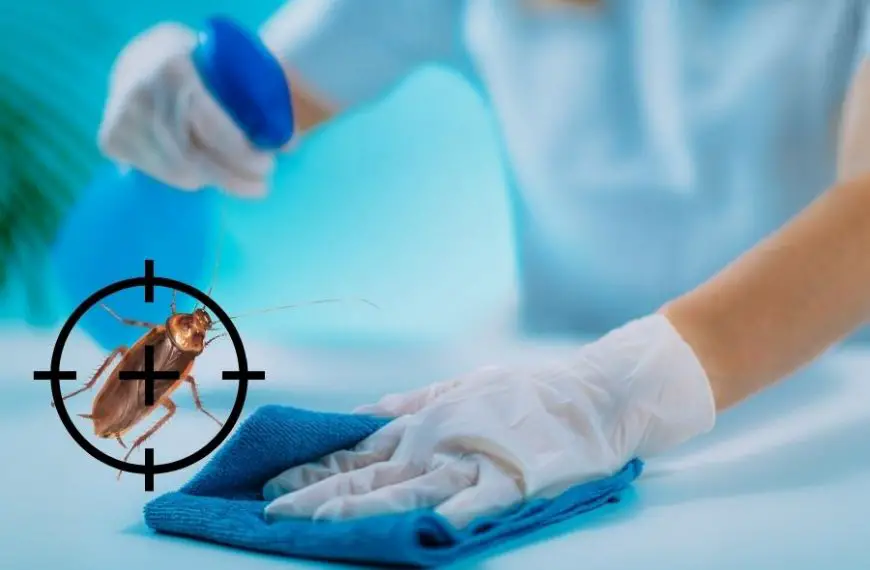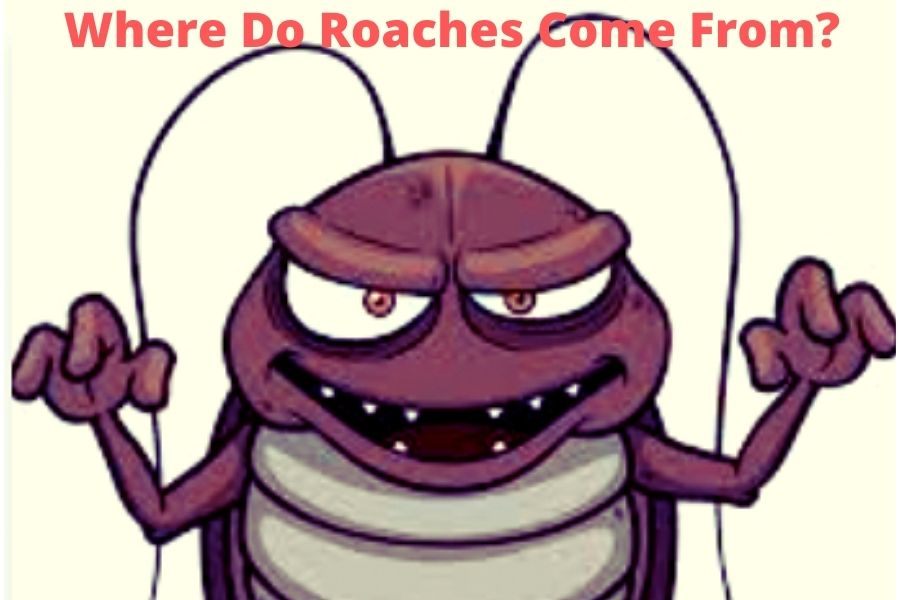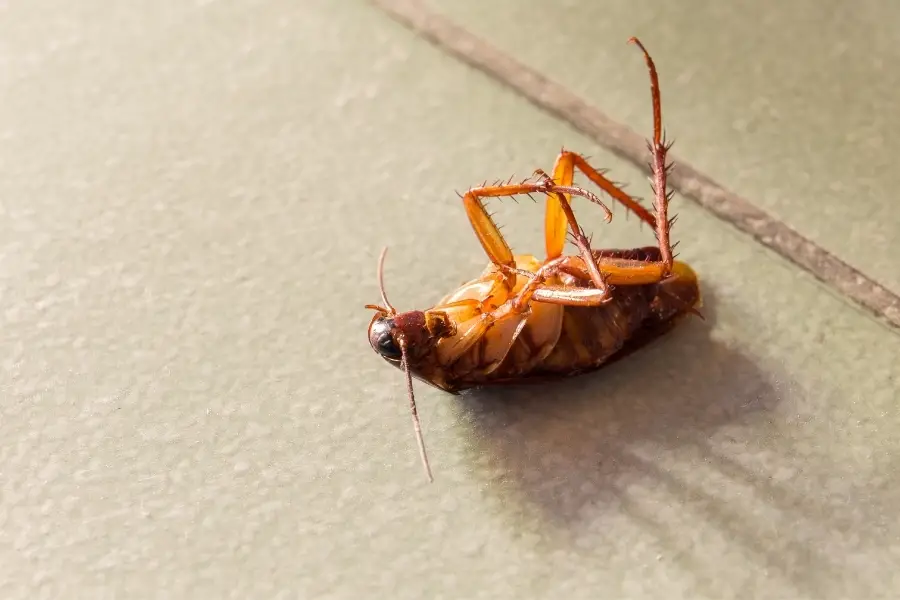If you have recently discovered a small cockroach within your dwelling, it is imperative to take swift action. Small roaches pose a significant threat due to their high potential for reproduction.
It is also possible that the small roach you have encountered is a juvenile offspring of a larger species that typically resides outdoors. If the roach measures between 1-2 centimeters in length, it may belong to the German, Asian, or Brown-Banded species, or a closely related variant.
Encountering any of these species can lead to serious concerns.
On the other hand, if the small roach is an immature member of the American Cockroach species, your situation may not be as dire.

CAUTION!
- Small Roaches, such as the German Roach, reproduce rapidly, with a single egg capsule containing 30-50 offspring.
- Mini roaches have a strong inclination to infest homes and prefer indoor habitats, with the exception of the Asian Cockroach which tends to reside outdoors.
- Eradicating small roaches can be extremely challenging.
- These pests emit an unpleasant odor and pose significant health risks.
- Small roaches are thigmotactic insects, meaning they seek tight spaces to hide in.
- Infesting appliances or the fridge is a common objective for these pests.
Tired of cockroaches? Invest in only these products and follow the guide to eliminate roaches!
Use these products, and you will be roach free in less than a week.
1. Advion Cockroach Gel Bait (Review)
2. Gentrol IGR Point Source (Review)
Other Products to try:
1. Combat Roach Traps (Easy than gel baits)
2. Hot Shot Foggers (To kill in masses – 95%)
3. Pet Safe Killers (Uses Essential Oils)
4. Ortho Defence Outdoor Roach Killer (Prevent Roaches)
Identify the type of Small Roach
Cockroaches exhibit a wide range of sizes, with some of the largest specimens, such as the one discovered by Facebook user Locutor O. Paniagua on September 4, 2020, measuring up to 4.5 inches, earning the creature a world record title.
Despite their impressive size, larger roaches are less likely to infest homes than their smaller counterparts.
In nearly 90 percent of cases, a sighting of a small cockroach will be identified as either a German Roach or a nymph of the German species.
Appearance
The physical similarities between different species of small cockroaches make it challenging to differentiate them. For instance, the German Roach and the Asian Cockroach have nearly identical appearances.
While the brown-banded roach can be recognized by the two distinctive stripes on its back, the wings of adult specimens usually obscure them from view. However, the stripes may be more visible in baby brown-banded roaches.


Small roaches, including the German cockroach, Brown-banded cockroach, and Asian cockroach, share several characteristics, such as light brown or tannish-colored, thin, and flat bodies.
Their wings are translucent and fold upon one another, and they are marked with two distinct bands across their backs.
Size
In terms of size, most small roaches measure between 0.3 to 0.5 inches long, including the species previously mentioned.
Early instar nymphs of these species typically range from 2 to 3 millimeters long, while middle instar nymphs can grow to be approximately 8 to 9 millimeters in length.
| Name of Roach | Size |
|---|---|
| 0.51 – 0.62 inches (13 – 16 mm) | |
| 0.43 – 0.55 inches (11 – 14 mm) | |
| 0.51 – 0.62 inches (13 – 16 mm) |
Types of Small Cockroaches
As explained above, there are not many types of small roaches. Its 90 percent of the cases, you will spot German roach.
- German Cockroach
- Brown Banded Cockroach
- Asian Cockroach
- Wood Cockroach (Identical to Asian Roach and won’t infest homes)
- Red Runner Roach (You won’t find them as they are highly desierable as feeder roaches)
- Dubia Roaches (You won’t find them as they are highly desierable as feeder roaches)
Wings
With the exception of baby nymphs, most small roaches possess wings. These pests can typically be found in damp areas of a home, such as kitchens, bathrooms, or basements, where they leave behind telltale smear marks.
These marks, which resemble small brown or black stains, can indicate a severe infestation and require immediate attention to control and eliminate the roaches.
Small Roaches Babies vs Large Roaches Babies
Baby nymphs of small and large cockroach species can be difficult to distinguish from one another due to their similar size and appearance.
However, identifying fully grown specimens is typically easier, as larger cockroaches tend to have distinct physical characteristics that set them apart from smaller roaches.
Small Roaches have Wings
Fully grown small roaches typically have wings, which set them apart from their baby counterparts. Baby roaches, both small and large species, lack wings until reaching puberty.
Color of Baby Roaches
Another factor that can help distinguish between baby roach species is color.

For example, tiny red roaches are typically the offspring of American cockroaches, which primarily inhabit sewer systems and prefer not to infest homes. However, they can still infest homes with the right conditions of darkness, humidity, and food availability.
In contrast, tiny black roaches are typically German baby roaches, as their early-stage offspring will appear dark black in color. Spotting baby German roaches is often an indication of an ongoing infestation, as they reproduce rapidly and can quickly take over a home if left unchecked.
Habitat and Eating Habits of Small Roaches
German roaches, which are the most common type of small roach, are also among the most timid. They tend to avoid humans and will typically crawl around homes at night in search of food and shelter.
Like other small roach species, German roaches thrive in warm, humid environments with plenty of sources of food and shelter, such as spilled food, garbage, accessible drains, and nesting sites.
Small roaches are omnivorous and will eat a wide range of foods, but they have a particular fondness for filth, decomposing food, starchy items, and sweet foods. They can often be found dwelling inside gutters, sewage lines, bathroom drains, closed cabinets, refrigerators, old clothes, and behind furniture.
Do Small Roaches Bite?
Roaches are not known to bite humans frequently, but when they do, it’s typically because they are in search of food or because they feel threatened. In general, roaches are timid creatures that prefer to avoid humans and other large animals.
However, if there is a heavy infestation in your home or if food sources are scarce, roaches may become more aggressive and start to venture out during the day in search of food. In such cases, it is possible for them to mistake a sleeping human for a source of food and bite them.
Roach bites are usually harmless, but they can sometimes lead to infections and allergic reactions. If you suspect that you have been bitten by a roach, it’s essential to seek medical attention to avoid any complications.
| Type of small roach | Bitting Capability |
|---|---|
| Brown Banded Cockroach | Bite more Frequently |
| Asian Cockroach | Occasionally Bite |
| German Cockroach | Rarely Bite |
| Wood Roach | Rarely Bite |
Small Roaches can be a Problem
The pace at which roaches reproduce is astonishingly fast. For example, one German cockroach can give rise to almost 360 baby roaches in her lifetime.
Once the small roaches enter the house, they nest at difficult places to reach. They will love to nest around the electric back panel of the fridge, under the furniture in the attic, and damp basements.
Tiny roaches can also be a problem for your neighbors; they will soon migrate and infest their house or apartment.
The exoskeleton from a molting nymph, the poop, and saliva from small roaches can trigger allergies and asthma episodes. They can also transfer bacteria, including Salmonella Typhi, from sewage to your food. Therefore, getting rid of skinny roaches should always be your top priority.
Sometimes, we can mistakenly refer to bed bugs as small roaches, which are a problem of their own. Here is a complete article on bugs that look just like cockroaches.
How to get rid of small roaches?
Small roaches can be challenging to exterminate as they tend to nest in hard-to-reach areas, and their nocturnal and timid nature makes them less likely to venture out during the day. It is therefore recommended to read up on effective strategies for coaxing them out of hiding before attempting to eliminate them.
However, I recommend you read seven ways to get a cockroach out of hiding before attempting to kill small roaches.
There are several methods to consider for getting rid of small roaches, including:
Method 1: Use Gel Baits
Professional pest control experts rely on baiting techniques to control small roaches. The bait’s appealing scent lures the roaches into consuming it, leading to their eventual elimination.
Numerous baby roach baits flood the market, yet Advion Cockroach Gel Bait stands out as a superior and user-friendly option compared to other baits.
To employ bait for eradicating baby roaches, simply place Advion Gel Bait in various locations around the house, such as attics, basement corners, kitchen cabinets, drawers, bathrooms, and entry points. Allow a few days for the results to manifest.
While it is possible to prepare a homemade bait by combining boric acid and consumable ingredients, it can be a somewhat messy and time-consuming method.
Method 2: Use Bait Traps and Killers
Employing traps as a means of eliminating small roaches can prove to be a reasonably effective strategy, albeit one that may take more time to produce desired results.
The Hot Shot Liquid Cockroach Trapper and Killer represents a particularly reliable trapping solution that is both devoid of chemicals and poses no risks to the safety of pets or children.
To achieve optimal results, it is advisable to position the traps in strategic locations around the household, particularly in the proximity of the roach colony.
Once a week has passed, the traps should be removed from the designated areas.
Method 3: Using Insecticide Spray or Foggers
Insecticide spray is often preferred by many due to its quick and effective action. However, it is important to note that the efficacy of this method may be limited in certain circumstances, particularly when dealing with small roaches that tend to conceal themselves.
To maximize the effectiveness of insecticide spray, it is advisable to apply the solution generously to suspected hiding places and allow it to take effect for at least 25 minutes before ventilating the room.
As a trusted recommendation, Bengal Roach Killer is an insecticide spray that contains Nyler, a compound known for its ability to prevent reinfestation for a period of up to six months. This product is highly recommended for those seeking a reliable and long-lasting solution to their roach infestation problems.
Preventing Small Roaches Infestation
Preventing small roaches from infesting your house is not a difficult job. All you need to do is,
- Clean your House Regularly.
- If your floor is carpeted, vacuum clean it regularly, and if tiled, mope it with phenol.
- Cover drains and garbage bins properly, especially at night.
- Fix leaking water and sewerage lines.
- Cover crevices and gaps in doors and windows with masking tape.
- Use Natural Bug Repellents to keep roaches at bay.
- Remove the source of humidity and ventilate your home well.
- Fix lightning problems.
- Pick up clutter, spilled food, and garbage.
- Maintain your wardrobe and cabinets orderly.
- Use IGR spray to keep baby roaches from maturing into adult bugs.
Do you know small roaches also produce noise, especially at night? Click the link if you want to hear roaches’ noise.





